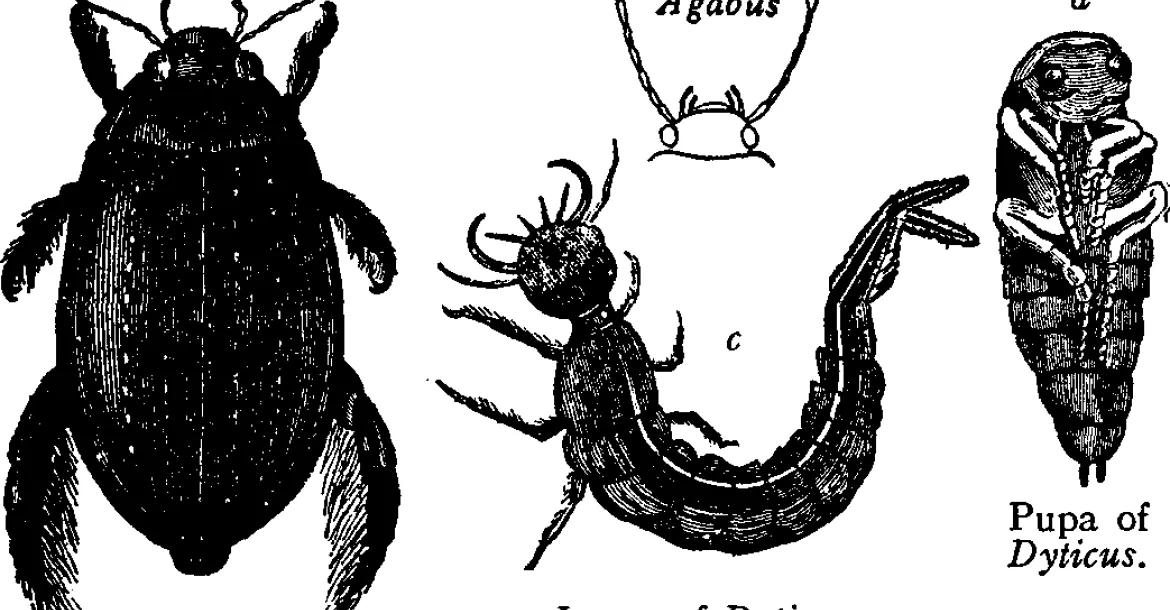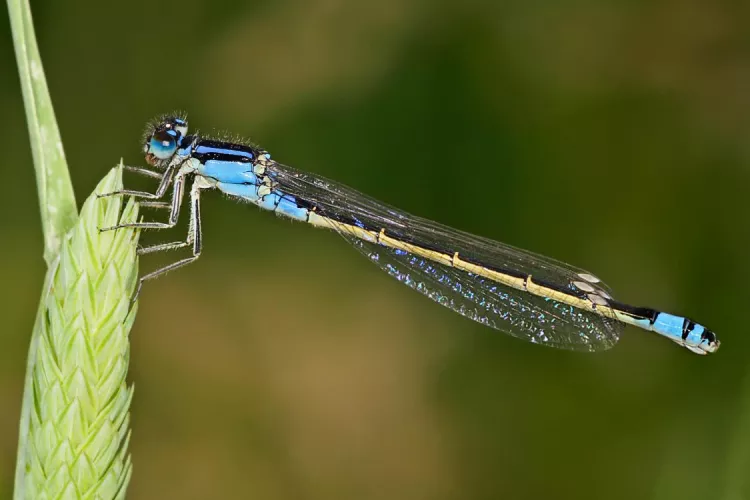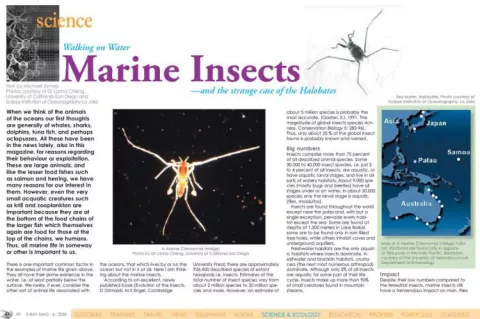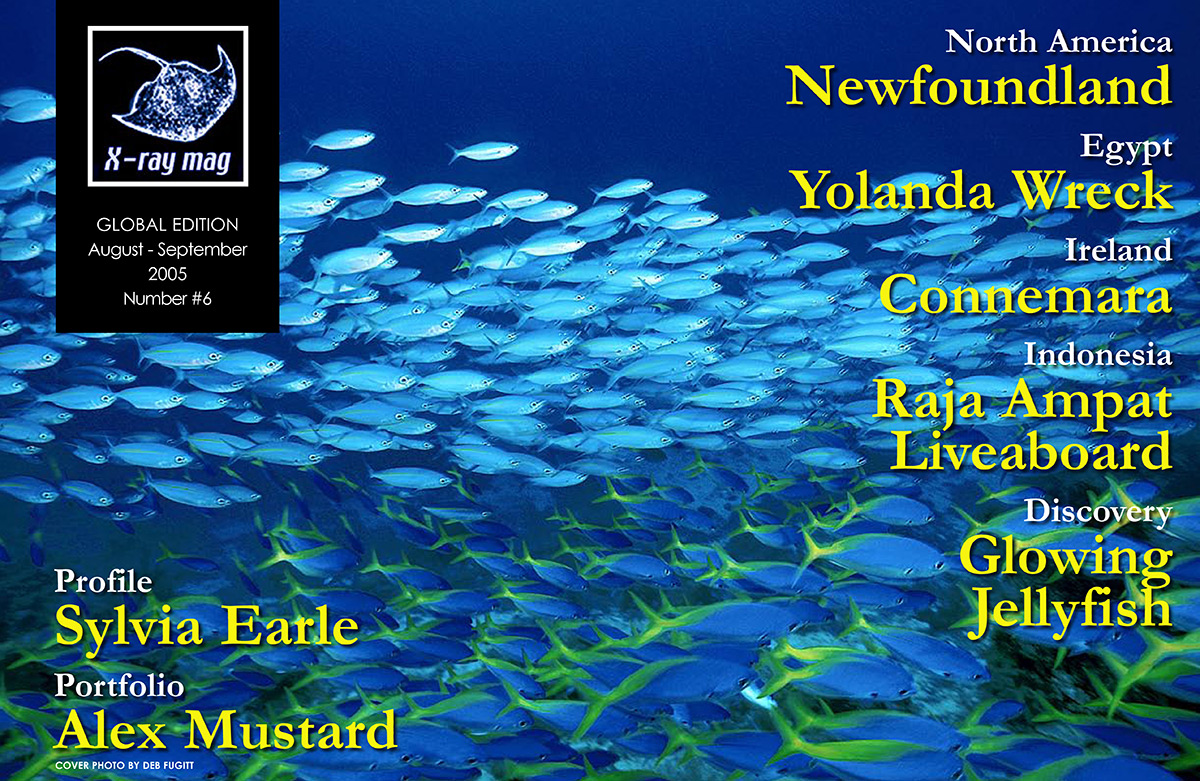When we think of the animals of the oceans our first thoughts are generally of whales, sharks, dolphins, tuna fish, and perhaps octopusses. All these have been in the news lately, also in this magazine, for reasons regarding their behaviour or exploitation. These are large animals, and like the lesser food fishes such as salmon and herring, we have many reasons for our interest in them. However, even the very small acquatic creatures such as krill and zooplankton are important because they are at the bottom of the food chains of the larger fish which themselves again are food for those at the top of the chains, we humans. Thus, all marine life in someway or other is important to us.
There is one important common factor in the examples of marine life given above. They all have their prime existence in the water, i.e. at least partially below the surface. We rarely, if ever, consider the other sort of animal life associated with the oceans, that which lives by or on the ocean but not in it at all. Here I am thinking about marine insects.
According to an excellent, newly published book (Evolution of the Insects, D Grimaldi, M S Engel, Cambridge University Press) there are approximately 926,400 described species of extant hexapods i.e. insects. Estimates of the total number of insect species vary from about 2 million species to 30 million species and more. However, an estimate of about 5 million species is probably the most accurate. (Gaston, KJ. 1991. The magnitude of global insects species richness. Conservation Biology 5: 283-96). Thus, only about 20 % of the global insect fauna is probably known and named.
Big numbers
Insects comprise more than 75 per cent of all described animal species. Some 30,000 to 40,000 insect species, i.e. just 3 to 4 per cent of all insects, are aquatic, or have aquatic larval stages, and live in all sorts of watery habitats. About 9,000 species (mostly bugs and beetles) have all stages under or on water. In about 30,000 species only the larval stage is aquatic (flies, mosquitos).
Insects are found throughout the world except near the poles and, with but a single exception, pervade every habitat except the sea. Some are found at depths of 1,300 meters in Lake Baikal, some are to be found only in rain-filled tree holes, while others inhabit caves and underground aquifers.
Freshwater habitats are the only aquatic habitats where insects dominate. In saltwater and brackish habitats, crustacea (the next most numerous arthropod) dominate. Although only 3% of all insects are aquatic for some part of their life cycle, insects make up more than 90% of small creatures found in mountain streams.
Impact
Despite their low numbers compared to the terrestrial insects, marine insects still have a tremendous impact on man. Flies are the most numerous and economically important species of marine insects.The disease-bearing mosquitoes, biting horse flies, deer flies, and midges have impeded the human development of enormous areas of coastal land. And other marine flies can transmit diseases such as Leishmaniasis.
Unlike the dominating land-based insects, however, the marine insects have additional problems to overcome in their fight for survival. For example, how do aquatic insects avoid drowning? Most insects that land on water are trapped by the water surface tension and tiny ones can even drown inside a water droplet, unable to break out of the bubble surface. Aquatic insects cope by having a waterproofed skin so the water doesn’t get into the body. Many are covered with a water-repellent waxy layer. They also usually have hairy or waxy legs which repel water so they don’t get trapped by the water surface tension.
The oxygen problem
There is very little oxygen in water (as low as 0.4% and often zero). Water contains less oxygen the warmer it is. This is why there is often more life in a cool pond shaded by trees and in temperate climates. There is much more oxygen in air (20%), and water is much heavier than air. So, to extract oxygen from water, an animal will have to process a lot of water to get the same amount of oxygen. That is probably one reason why adult aquatic insects continue to breathe air instead of developing gills. Usually, only aquatic insect larvae develop gills to absorb oxygen from the water. So, how do aquatic insects obtain their oxygen?
Like mosquito larva and water scorpion, they can snorkel with a breathing tube. The end of the tube usually has bristles to break the water surface tension and keep the tube open. This method, however, doesn’t allow the insect to travel far from the water surface. Others have a scuba tank. These “divers” create an “air tank” for greater freedom of movement underwater. A skin of air that is trapped by hairs on the body or under the wing covers (Water Beetle). The insect breathes the air in the bubble through the holes in its abdomen (spiracles) just like other insects.
Making the best of both worlds
Living on the margin of water and air, many aquatic insects have developed ingenious ways to sense the world and to move around. Most aquatic insects are sensitive to water ripples to detect predators or prey. Some even create their own ripples on the water surface and process the returning “echoes” to detect prey. Many also create ripples to find mates and communicate with each other (Whirligig Beetle, Pond Skater).
In a double-vision adaptation the Whirligig Beetle has eyes divided horizontally to see both under and above water. This is very useful when predators can attack you from both below and above. Many paddle underwater with oar-like legs. These legs are long, flattened and fringed. The hairy fringes spread out on the power stroke increasing the surface area, and bend in on the return stroke to reduce water resistance. (Water Beetle, Water Boatman). These insects usually have flattened streamlined bodies or are torpedo-shaped.
The Camphor Beetle (Stenus) also skates on the water surface but has a neat trick to enhance its speed. When alarmed, it releases a chemical from its back legs that reduces the water surface tension. In this way, the water surface tension on the front pulls it forwards. It shoots forwards on its front feet which are held out like skis, and steers itself by flexing its abdomen. This tiny beetle is the size of a rice grain but can travel nearly 1m a second this way. It doesn’t hunt on water, but at the water’s edge, and saves this trick to escape predators.
The Halobates
As we have seen above, marine insects have developed successful strategies for survival in an aqueous environment. However, if we read further in ‘Evolution of the Insects’ (referred to above) one finds the very surprising statement (page 317) “Halobates is the only pelagic insect” —i.e it is the only insect that lives on the open oceans! Halobates, or sea skaters as they are called, are a group of wingless insects that can “skate” on ocean water. Sea skaters feed primarily on zooplankton trapped at the sea surface, grasping their prey with their short front legs and sucking them dry. They have never been observed breaking the water surface to feed—i.e they do not dive.
While members of the coastal species deposit their eggs on fixed materials such as mangrove tree trunks or rocks, open-ocean species lay eggs on just about anything that floats, including empty seashells, wood, feathers, seeds and even lumps of tar.
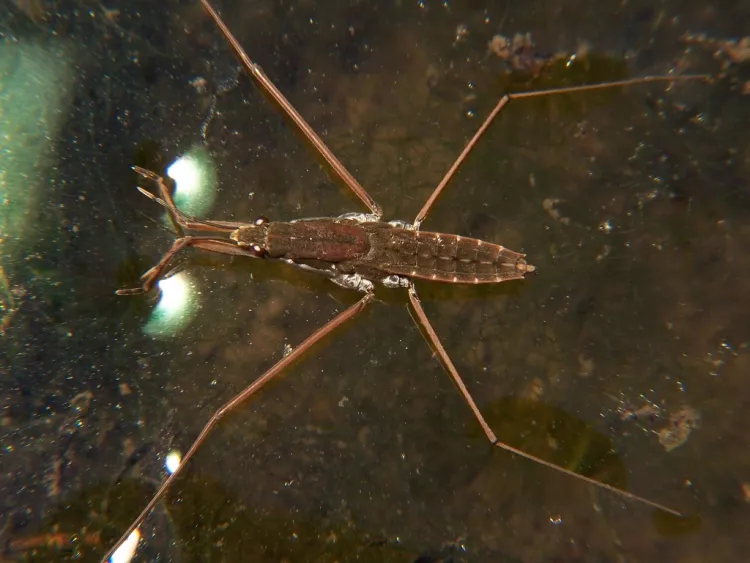
Walking on the ocean
Among the most interesting aspects of the Halobates is how they manage to walk or skate across the surface of the ocean. The secret is the tiny water-repellent hairs on their legs and feet that allow them to “tiptoe” across the surface of the water. These hairs also help to spread the insects’ weight over a larger surface area, preventing them from sinking. The surface tension of the air-sea interface allows them to stand or move on the water at a speed as fast as one meter per second. As long as the surface tension is maintained, sea skaters are able to move normally. If the surface tension is lowered by pollutants or detergents, they flop on the surface and eventually sink.
Tiny hook-shaped hairs, about 1.5 microns long, also cover the sea skaters’ bodies. These trap a layer of air surrounding the insect, making them buoyant. Thus, they are basically enclosed in an air bubble; if they are pushed under the water, they quickly pop up again. If sea skaters are caught in rough seas and trapped beneath the surface for short periods, this jacket of air provides them with enough oxygen to survive.
No other animal on Earth lives in such a vast two-dimensional habitat. They are the only marine invertebrates constrained to travelling, feeding and reproducing only at the surface of the ocean. Among the difficulties of living in such a vast world is how the Halobates find each other to breed and lay eggs.
Just one genus living on the oceans
But why is there only just this one single genus of insect living on the open oceans? The five known species of Halobates are distributed around the world roughly between latitudes 40-degrees north or south of the equator. Do Halobates require these warm waters, or are they more widely distributed but have not yet been detected? Why are there so few species, and how do they live in a habitat where no other insect occurs?
Given the diversity of insects in freshwater, it might be thought that the Earth’s oceans would support an almost infinite number if insect species. Only 0.0091 percent of the Earth’s surface water is contained in lakes and rivers, and 95.96 percent is in the oceans. Nearly 30,000 insects inhabit freshwater yet only five species belonging to one genus are adapted to living freely in the world’s most vast ecosystem. This is very strange indeed.
Hot hypotheses
Dr Lanna Cheng, a well-known long-time expert on marine insects at the University of California, San Diego, with others, gives several hypotheses as to why this is so. The first hypothesis suggests that insects are limited by salinity. While this may be true for the majority of insects, many flies have effecient osmoregulatory mechanisms that allow then to tolerate salinity in excess of 3 times that of the ocean.
The second hypothesis suggests that ocean depth limits an insect’s ability to complete its development. This is true of many insects and yet chironomid fly larvae survive at depths below those that even the deepest diving mammals can reach. The third hypothesis suggests that the combination of salinity and depth imposes a further limitation of oxygen content in ocean water. Again, certain fly larvae are able to survive months without oxygen, and numerous aquatic insects survive in polluted waters with similar or lower oxygen concentrations.
Finally, a fourth hypothesis considers the fact that insects were successful because they colonized land. By moving away from the ocean, they adapted to a terrestrial existence while their major competitors the crustaceans stayed in the sea and continued to adapt. As millions of years passed, insects lost their ability to successfully compete in the ocean while crustaceans have had only limited success in invading land. Dr Lanna Cheng believes that this is the most likely explanation for the abscence of insects in the oceans. As potential evidence, it is noted that the only insects that live on the open ocean, live on its surface. As such, they never come in contact with the crustaceans living beneath its surface.
Final thoughts
There are many questions still unanswered about this strange case of the Halobates. How come that they alone of the so many insects managed to adapt to life on the oceans? Whatever hypothesis is true, though, if any of them are, the Halobates are a really remarkable example of marine life rarely, if ever, to be observed by divers.
For more information on marine insects, visit the Marine Insects Home Page of the Department of Biology at the University of Nebraska at Kearny: www.unk.edu
Or visit the Marine Insects page of the Department of Entomology at the University of Nebraska at Lincoln: entomology.unl.edu ■
Published in
-
X-Ray Mag #6
- Read more about X-Ray Mag #6
- Log in to post comments

